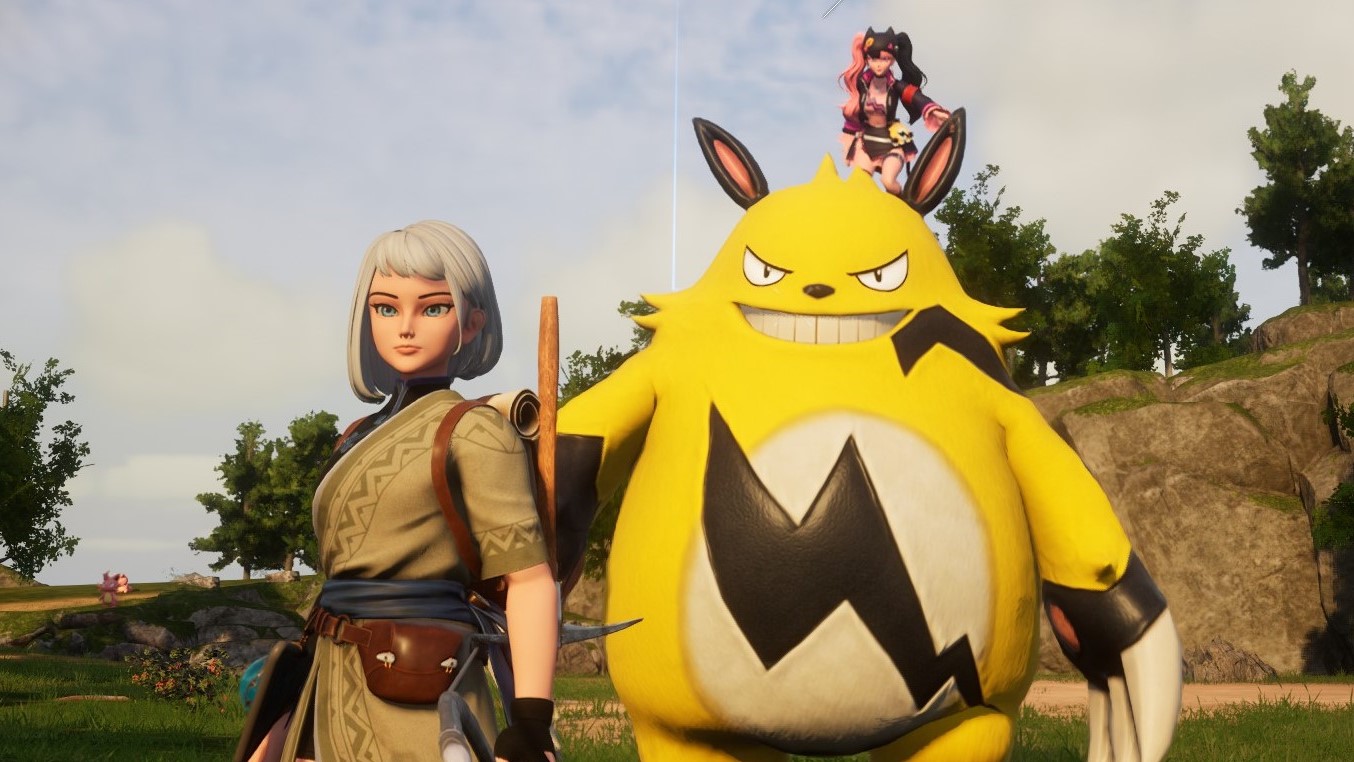Palworld dev says 'a game without a multiplayer mode just doesn’t feel right in the era we live today'
"Colleagues were against leaving useless bodies in the game, but I pushed it through."

2024 has so far seen two breakout hits and, while they're very different prospects, both share some elements in common. Arrowhead's Helldivers 2 is the current flavour of the moment, while just before that we saw the huge success of PocketPair's Palworld. It might not seem the two have much crossover, but both are built around an irreverent multiplayer take on popular genres, extraction shooters and survival games, and the sense of community both have managed to foster feels key to their appeal.
PocketPair CEO and Palworld creator Takuro Mizobe has given an interview to Bloomberg, in which he muses over some of the reasons behind the game becoming such a smash. The 35 year-old Mizobe describes the current environment as one where a game must be fun to watch as well as play, and where multiplayer elements are essential: Pokémon is the most oft-cited inspiration, but Mizobe credits the game's design to ideas lifted from several titles including ARK: Survival Evolved, Factorio and RimWorld. And once you have the foundation, then you start adding personality like… dead Pals?
"In Palworld, the bodies of defeated Pals remain in the game, meaninglessly," says Mizobe. "Typically, when you kill monsters or enemies, they either disappear or linger to be looted. Colleagues were against leaving useless bodies in the game, but I pushed it through because I thought players would find a way to play with and talk about it."
Mizobe seems hyper-conscious that success, in Palworld's case at least, has come from the game being a conversation starter ever since it was first revealed. From its first trailers the "Pokémon with guns" label stuck and, even though the game itself doesn't play anything like a Pokémon title, that surface similarity combined with dissonant notes like the dead Pal bodies gave it an odd quality that seemed to delight players en masse: the game, which sells for $30, had more than 25 million players in a month (albeit a chunk of these are on Xbox Game Pass).
The unusual art style is also, Mizobe believes, a part of the appeal, and was down to switching technologies during development. Palworld began with the team using anime-inspired creature assets from the Unity store, before development moved onto Epic's Unreal Engine and its more faux-photorealistic style: finding common ground was one of the hardest bits of the game's development, says Mizobe, but worth it for the way it surprised players.
Mizobe ends by returning to multiplayer, which he thinks is not only the glue that binds all the above together, but no less than a necessity for any game that wants to recreate the kind of viral appeal that made it feel like everyone was playing Palworld in those first weeks of release.
"Games are most fun when playing with friends," says Mizobe. "A game without a multiplayer mode just doesn’t feel right in the era we live today."
The biggest gaming news, reviews and hardware deals
Keep up to date with the most important stories and the best deals, as picked by the PC Gamer team.
Palworld is currently looking for beta testers for future content, though PocketPair has been careful to dial-down players' expectations as much as it can. The odd elements that Mizobe flags definitely persist: whether that's the developer itself apologising for inadvertently fixing a bug, or players infinitely mounting then butchering the same helpless creature for parts (after which their corpse remains in-game, of course). Palworld inspires a lot of comparisons, but Mizobe has a point: there just isn't much else like it.

Rich is a games journalist with 15 years' experience, beginning his career on Edge magazine before working for a wide range of outlets, including Ars Technica, Eurogamer, GamesRadar+, Gamespot, the Guardian, IGN, the New Statesman, Polygon, and Vice. He was the editor of Kotaku UK, the UK arm of Kotaku, for three years before joining PC Gamer. He is the author of a Brief History of Video Games, a full history of the medium, which the Midwest Book Review described as "[a] must-read for serious minded game historians and curious video game connoisseurs alike."

